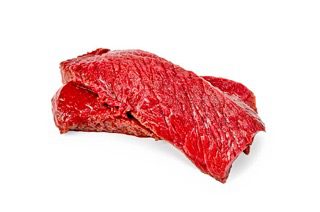

Elk meat can be a healthy addition to a dog’s diet due to its high protein content. However, it is important to introduce it gradually and in small amounts to avoid digestive issues such as diarrhea.
Elk meat is a great source of lean protein and iron. Elk are mostly free-roaming and grass-fed, making their meat a healthier option than beef. It has a similar taste and texture to beef, making it a tasty alternative.
When introducing elk meat to a dog, it is important to monitor their reaction as it may be too rich for some dogs. Excessive consumption can lead to digestive issues such as flatulence or diarrhea.
Elk meat can be served raw or cooked. Dog treats made from elk meat are also available, but it is important to check the ingredient list and choose ones that are 100% elk meat without artificial colors, flavors, or preservatives.
Elk meat is a lean protein source that is a great alternative to traditional meats like beef or chicken. It is high in essential amino acids and contains important vitamins and minerals that can benefit a dog's overall health. Elk meat is also low in fat and cholesterol, making it a great option for dogs that need to maintain a healthy weight or have heart issues.
However, there are risks associated with feeding elk meat to dogs. It is important to ensure that the meat is properly cooked to avoid the risk of bacterial contamination. Additionally, elk meat can be high in purines, which can increase the risk of developing kidney stones in some dogs.
In extreme cases, if a dog shows signs of illness or discomfort after consuming elk meat, it is important to seek veterinary care immediately. Two safer alternatives to elk meat are turkey or fish, which are also lean protein sources that are low in fat and cholesterol.
If you choose to feed your dog elk meat, a serving idea could be to mix it with some cooked vegetables like sweet potatoes or green beans for a balanced meal.